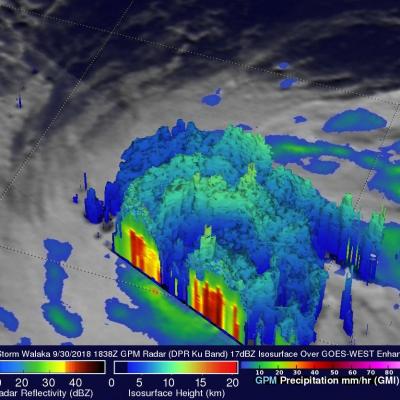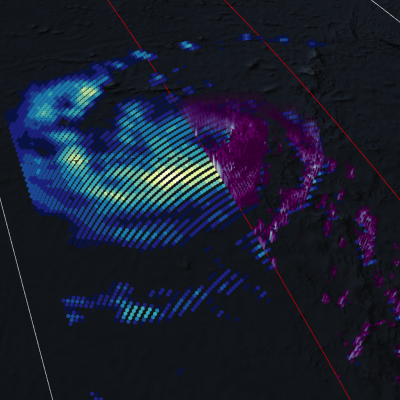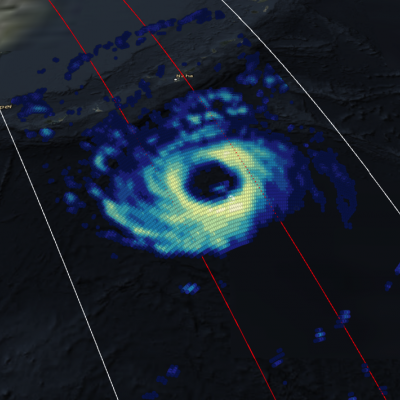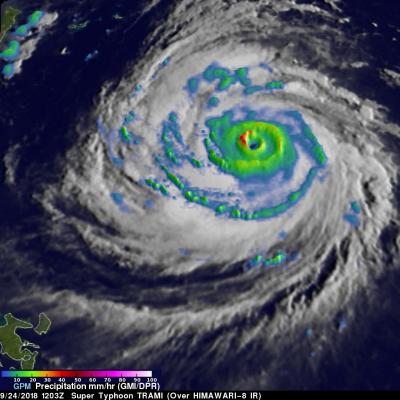GPM Examines Upgraded Hurricane Leslie
The GPM core observatory satellite passed above hurricane Leslie on October 3, 2018 at 7:33 AM EDT (1133 UTC). Leslie had just been upgraded to a hurricane by the National Hurricane Center (NHC). GPM's Microwave Imager (GMI) instrument collected data that revealed light to moderate convective rainfall in Leslie's clearly evident eye wall. Very little precipitation was shown by GPM in the center of the hurricane's nearly circular eye. Algorithms developed by NASA's Precipitation Measurement Missions (PMM) science team indicated that rain was falling at over 1.8 inches (45.7 mm) per hour within





